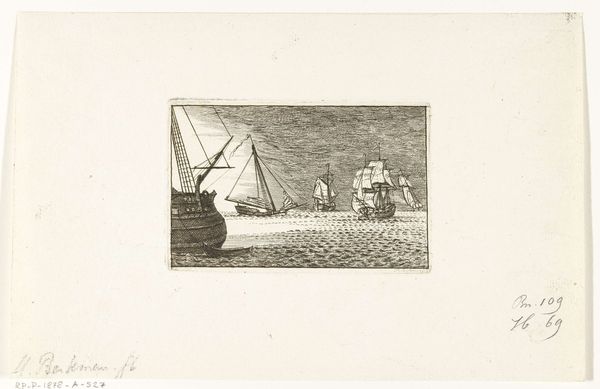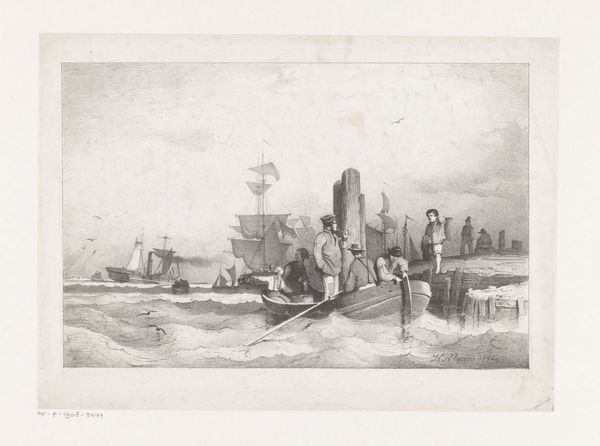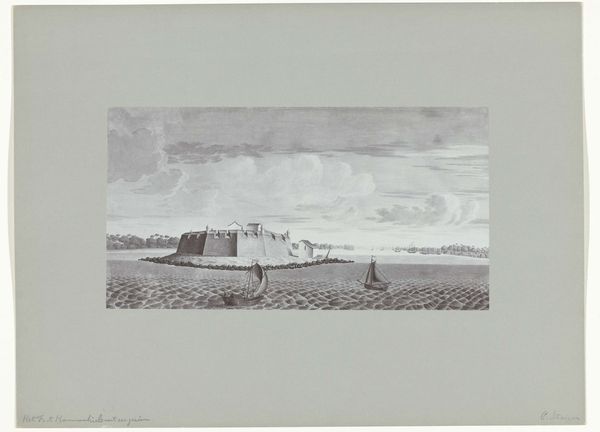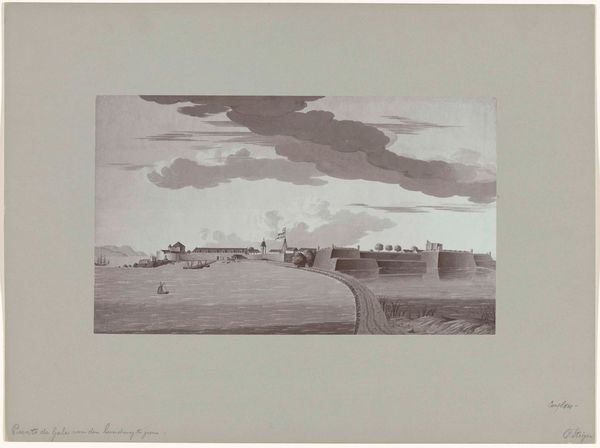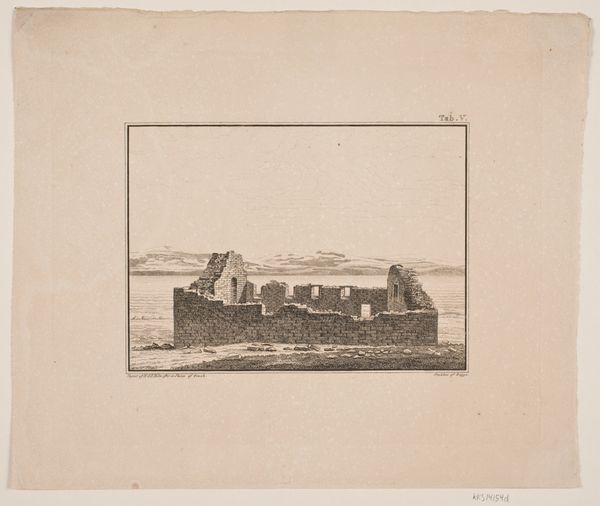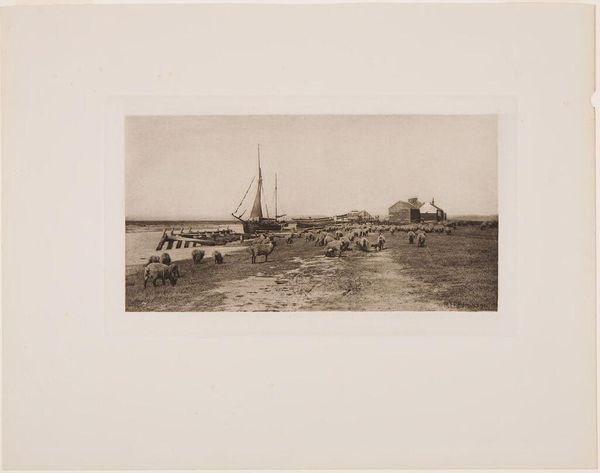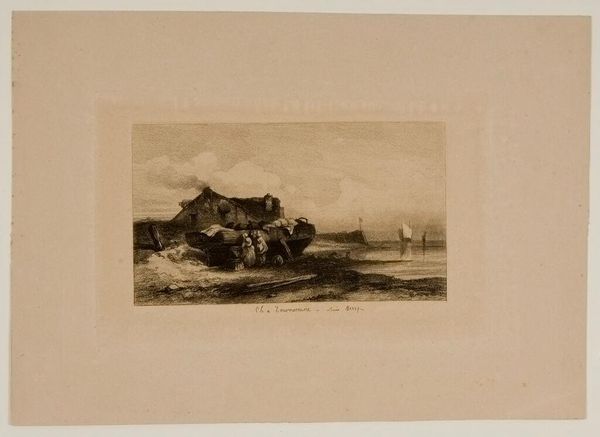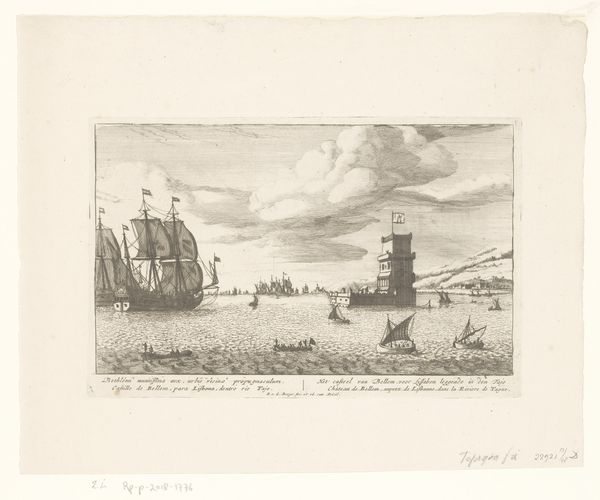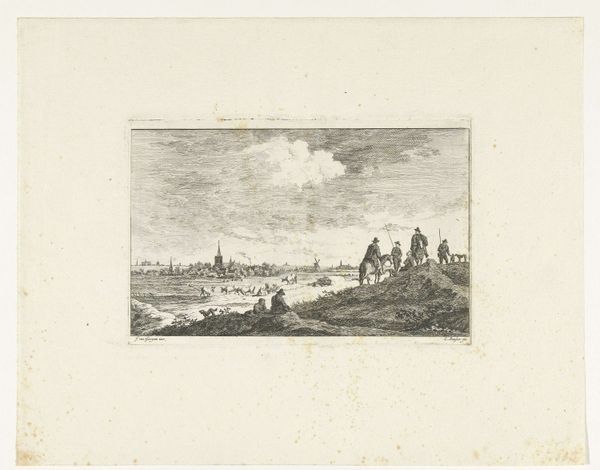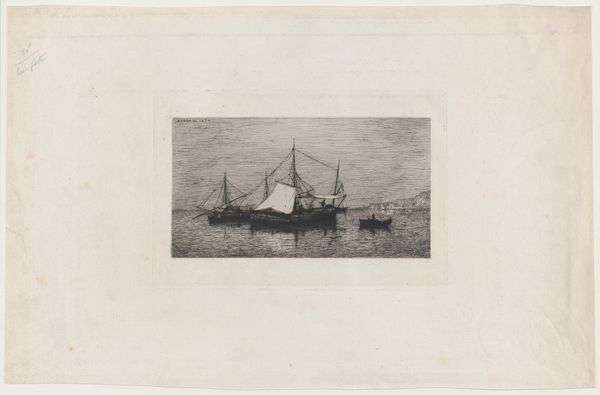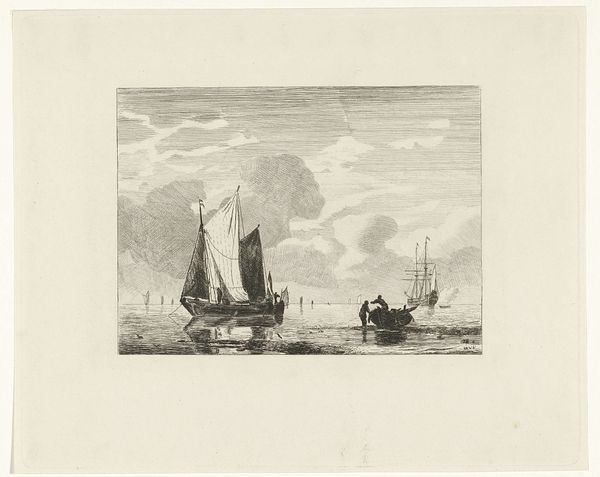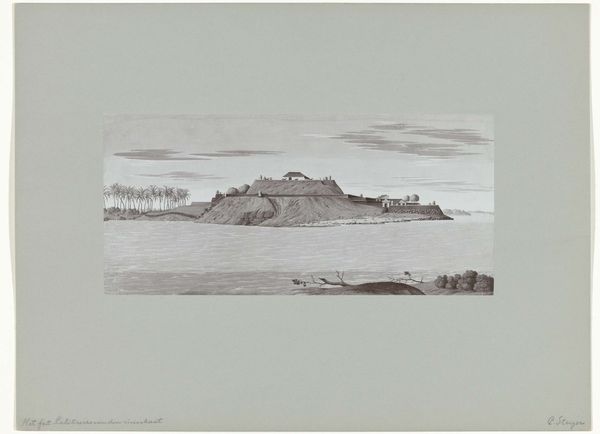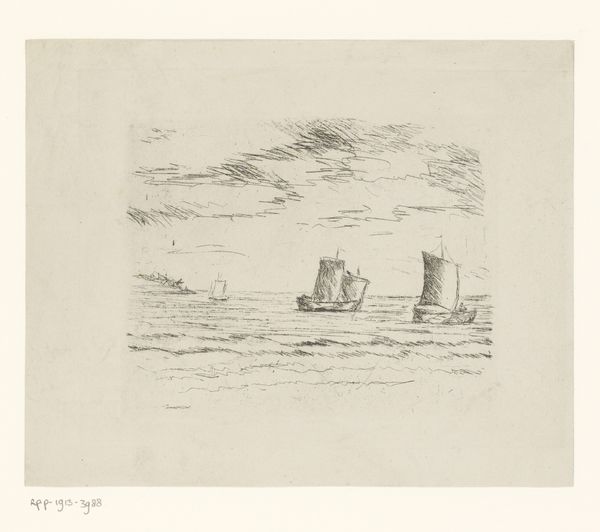
drawing, print, etching
#
drawing
# print
#
etching
#
landscape
Dimensions: height 180 mm, width 299 mm, height 325 mm, width 438 mm
Copyright: Rijks Museum: Open Domain
Curator: The stillness of this etching immediately strikes me. A monochrome vista, rendered with such delicate lines... There’s a quiet strength, almost a resilience, conveyed by the structure at its heart. Editor: Indeed. This etching by C. Steiger, likely created between 1890 and 1910, presents "Het Fort Hammenhiel". Given its age, consider what such fortifications represent—not just physical protection, but the political anxieties of empire, colonial legacies etched onto the very landscape. Who was defended? From whom? And at what cost? Curator: Visually, the fort looms large but seems vulnerable, isolated on its small island. The surrounding waters aren't overtly threatening, yet they isolate the stronghold, hinting perhaps at both safety and vulnerability, a dichotomy so often present in fortifications. The boats, are they arriving or leaving, a connection or a means of retreat? The composition plays with our perceptions of power and security. Editor: Precisely. Notice also how the fort dominates the island itself—the structure taking precedence, dwarfing all else. Reflecting perhaps the value systems prioritizing military strength and colonial control. How does the fort impose on the natural landscape, reshaping it both physically and symbolically? Who had the power to define this space and for whose benefit? The boats are tiny relative to the architecture, so that human action, commerce, or movement almost insignificant to its presence. Curator: I am intrigued by how the artist emphasizes horizontality in this work, with both the building and the low-hanging clouds that contribute to a sense of the mundane. The light subtly reflects the psychological state. It is not dramatically romanticized, there is a sort of realism. Editor: It makes one contemplate, even today, how visual representation normalizes narratives of power and domination, of gendered and racial hierarchies implicit in colonial structures, so commonplace at the time that it blends almost invisibly with everyday life. Even landscape participates in solidifying hegemony. Curator: Ultimately, for me, it reveals not simply a building, but also a portrait of control—both literal and symbolic—during that era of profound change. Editor: Agreed. And invites us to remember what continues to reverberate through such images in terms of both individual experience and our global story.
Comments
No comments
Be the first to comment and join the conversation on the ultimate creative platform.

